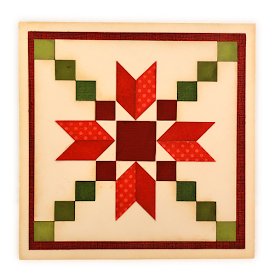Cut this quick-assembly gift box to hold
treats
or small gifts.
Box top includes a circle window
to back with clear acetate.
On
the front, layer the teardrop and scallop layers as lid decoration.
Bottom is
shaped for fold-in and latch closure.
Measures approx. 4" wide x
4" long x 1.5" deep when closed.
ASSEMBLY: 1. Identify and cut the shapes:
A box lid/back/side
B box side/front
C lid underlay contrast show-thru panel
D clear vinyl or acetate panel for window
E window opening "icing" trim ring
F window opening "icing" trim mask ring
(this over-lays E to form a finer squiggle ring)
G side panel "icing" overlays (3)
(NOTE the front thumb-hole icing is not shown)
6. Position and attach the window icing mask ring
so that circle opening edges align as precisely
as possible. This decreases the width of
the icing strip attached in step 5.
it under the lid so that the circle window edges
align as precisely as possible, and attach in place.
applied while the box is in a flattened form.
the tab to insert into the slot.
Un-flex the flanges so that bottom is flat.
11. Close the lid into position by tucking
the rounded flap behind the front panel.
A box lid/back/side
B box side/front
C lid underlay contrast show-thru panel
D clear vinyl or acetate panel for window
E window opening "icing" trim ring
F window opening "icing" trim mask ring
(this over-lays E to form a finer squiggle ring)
G side panel "icing" overlays (3)
(NOTE the front thumb-hole icing is not shown)
2. Prepare the box sections by bending back
on all perforations for lid, flap, walls, tabs, etc.
3. Join the two sections at one side seam
by overlapping the straight side edge at
the corresponding side seam tab to the perf
line and glue in place.
4. Position and attach the lid icing ring around
the window circle cutout with circle edges aligned
as precisely as possible.
5. Position and attach the icing accents
for sides, back and front panels.
so that circle opening edges align as precisely
as possible. This decreases the width of
the icing strip attached in step 5.
7. Position and attach the clear panel
behind the opening in the contrast underlay panel.
Consider using a double-stick tape such as
the Kool Tak shown here to attach clear panel.
8. With the contrast panel face side up, positionit under the lid so that the circle window edges
align as precisely as possible, and attach in place.
9. Form the box assembly into a tube to bring
the final side seams together, and join
as with first side seam.
NOTE that this seam can have finger pressureapplied while the box is in a flattened form.
10. To close the bottom of the box,
first fold the front flange into position,
then . . .
. . . bend the sides into position, and finally . . .
. . . bend the back into position . . .
. . . flexing the other panel positions to allowthe tab to insert into the slot.
Un-flex the flanges so that bottom is flat.
11. Close the lid into position by tucking
the rounded flap behind the front panel.
Here is the completed, filled treat box.






















































